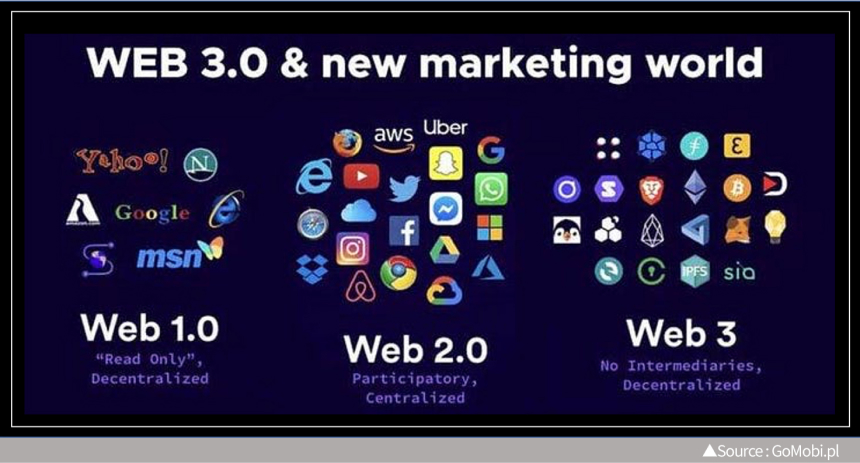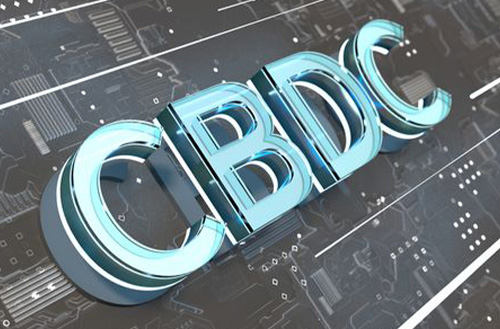

#Staff Column
2023.05.11
The Web 3.0 Revolution

Columnist | Introducing the columns written by member of Amorepacific Group
The Web 3.0 Trend: Heard of It,
Never Fully Understood It
Part 1. The Web 3.0 Revolution
Never Fully Understood It
Part 1. The Web 3.0 Revolution

Columnist You Yeondong
Amorepacific New Digital Business TF
Amorepacific New Digital Business TF
#Web3 #Blockchain #NFT - Do these terms ring a bell?
You may have heard of them somewhere, but you might not be completely familiar with what they mean.
With global conglomerates like Starbucks, Nike and Amazon ramping up their Web 3.0 game,
this new field of business has become a mega-trend, although the craze is not as prominent in Korea just yet.
So, what is Web 3.0? Shall we dive right in?
You may have heard of them somewhere, but you might not be completely familiar with what they mean.
With global conglomerates like Starbucks, Nike and Amazon ramping up their Web 3.0 game,
this new field of business has become a mega-trend, although the craze is not as prominent in Korea just yet.
So, what is Web 3.0? Shall we dive right in?
People’s reaction when the Internet first came out

In 1995, Bill Gates made an appearance on The Dave Letterman Show, one of the most popular talk shows of the time. When asked by the host what the Internet was, Bill Gates responds, saying “everybody can have their own homepage, send electronic mail … it’s the big new thing,” only to be laughed at by the host and the audience, who regard these tasks as something that can be done using the radio or a recorder.

< Watch the full video of Bill Gates’ interview here: https://www.youtube.com/watch?v=fs-YpQj88ew >
Bill Gates then goes on to explain that people can use the Internet to look up information about cigars, learn about statistics, or create communities of people with similar interests, which the host refers to as “the troubled loner chat room on the Internet,” alluding to the fact that Bill Gates is an idealist.
So, the Internet started amidst a mix of doubt, ridicule, and anticipation. As we all know, most of what Bill Gates mentioned in the interview 30 years ago became a reality. Even Bill Gates though couldn’t predict the era of the Internet that we currently live in. In the tech industry, the 1990s, when Bill Gates endorsed the internet, is referred to as the Web 1.0 era, which was followed by the Web 2.0 era of the 2010s, characterized by smartphone-enabled mutual communication.
Everyone has been talking about Web 3.0 for quite some time now. So, what is it? How is it presenting a new paradigm across the entire tech industry?
So, the Internet started amidst a mix of doubt, ridicule, and anticipation. As we all know, most of what Bill Gates mentioned in the interview 30 years ago became a reality. Even Bill Gates though couldn’t predict the era of the Internet that we currently live in. In the tech industry, the 1990s, when Bill Gates endorsed the internet, is referred to as the Web 1.0 era, which was followed by the Web 2.0 era of the 2010s, characterized by smartphone-enabled mutual communication.
Everyone has been talking about Web 3.0 for quite some time now. So, what is it? How is it presenting a new paradigm across the entire tech industry?
So what is Web 3.0 anyway?
Understanding Web 3.0 requires an understanding of Web 1.0 and 2.0. Technicalities aside, here is what Web 3.0 is, in plain English.

Web 1.0 - READ
Do you remember when the Internet first came out? Think Yahoo and MSN of the 1990s. The first things that come to my mind are the slow speed and the not-so-user-friendly UX/UI.
The Internet was a true revolution in that it made simultaneous delivery of information possible. However, it initially failed to distinguish itself from existing media like the TV, radio, and magazines as it did nothing more than deliver information in a unidirectional way. Hence came the end of the read-only Web 1.0 era.
Do you remember when the Internet first came out? Think Yahoo and MSN of the 1990s. The first things that come to my mind are the slow speed and the not-so-user-friendly UX/UI.
The Internet was a true revolution in that it made simultaneous delivery of information possible. However, it initially failed to distinguish itself from existing media like the TV, radio, and magazines as it did nothing more than deliver information in a unidirectional way. Hence came the end of the read-only Web 1.0 era.

Web 2.0 – READ, WRITE
Then came the Web 2.0 era in the 2010s. People could read and write on the Internet. The websites of this era provided users with an opportunity to participate. For example, Facebook created an environment where users could post content, make friends, and interact with each other. It was no surprise that social media platforms like Facebook, YouTube and Twitter rapidly gained a wide audience during Web 2.0.
Then came the Web 2.0 era in the 2010s. People could read and write on the Internet. The websites of this era provided users with an opportunity to participate. For example, Facebook created an environment where users could post content, make friends, and interact with each other. It was no surprise that social media platforms like Facebook, YouTube and Twitter rapidly gained a wide audience during Web 2.0.

With most people now using smartphones, platforms that encourage real-time user interaction have gained popularity. Naturally, these platforms created their own rules, introduced advertising products, and began accumulating tremendous wealth.
“But something doesn’t add up.”
Platforms have been providing a variety of services to their users for free. However, with an increase in the size of these platforms came a plethora of problems. Some platforms started monopolizing data or requiring a huge fee. Users started complaining and platforms started losing the trust of their users.
All content available on Instagram, Facebook, or Twitter is user-created content. So, it was only natural for users to wonder, “Why is the platform claiming all the rights to the content I created myself, let alone taking every penny it generates?” And that marked the beginning of Web 3.0.
“But something doesn’t add up.”
Platforms have been providing a variety of services to their users for free. However, with an increase in the size of these platforms came a plethora of problems. Some platforms started monopolizing data or requiring a huge fee. Users started complaining and platforms started losing the trust of their users.
All content available on Instagram, Facebook, or Twitter is user-created content. So, it was only natural for users to wonder, “Why is the platform claiming all the rights to the content I created myself, let alone taking every penny it generates?” And that marked the beginning of Web 3.0.
Web 3.0 - Read, write, and own
“I’m the actual owner.”
First, let’s look at how the dictionary defines Web 3.0.
“I’m the actual owner.”
First, let’s look at how the dictionary defines Web 3.0.

Here is the definition of Web 3.0. It’s written in English, but isn’t totally comprehensible. Well, the key takeaway here is ‘decentralization.’
#Decentralized
With Web 2.0, data is stored in the centralized processing device owned by the platform. User-created content is therefore also owned by the platform. This is why when a platform goes under in Web 2.0, like in the case of Cyworld, all the data created by users is lost with it.
On the other hand, with Web 3.0, data is stored in distributed blockchain ledgers. Uploading data in blockchain guarantees transparency and stability because, rather than the platform managing the data on its own, everyone involved accesses and verifies data through blockchain. This is how the ownership of data is transferred to individuals.
With Web 2.0, data is stored in the centralized processing device owned by the platform. User-created content is therefore also owned by the platform. This is why when a platform goes under in Web 2.0, like in the case of Cyworld, all the data created by users is lost with it.
On the other hand, with Web 3.0, data is stored in distributed blockchain ledgers. Uploading data in blockchain guarantees transparency and stability because, rather than the platform managing the data on its own, everyone involved accesses and verifies data through blockchain. This is how the ownership of data is transferred to individuals.

In Web 3.0, participants own data, meaning most profits, with the exception of some fees, are distributed to these participants using blockchain technology, with incentives provided in the form of NFTs or other tokens that can be converted into assets.
As such, Web 3.0 uses blockchain technology to solve problems inherent in Web 2.0, including #distribution, #coexistence, and #fairness, which is why it is sometimes defined not as a technological revolution, but as a philosophy that helps build the foundation for a new IT ecosystem.
As such, Web 3.0 uses blockchain technology to solve problems inherent in Web 2.0, including #distribution, #coexistence, and #fairness, which is why it is sometimes defined not as a technological revolution, but as a philosophy that helps build the foundation for a new IT ecosystem.
“Is Web 3.0 a revolution or a bubble?”
Web 3.0 is a hot potato. Some people call it “the revolution that redefines the Web paradigm,” while others defame it as “a mere marketing scheme that will go out of trend in no time.”
To be honest, all this fuss is what makes it more exciting. Web 3.0 was named as one of the five keywords at CES 2023 held earlier this year, where various use cases were introduced. The speed did not meet expectations, but the event was enough to show just how many companies were embracing themselves for a new era of the Internet.
To be honest, all this fuss is what makes it more exciting. Web 3.0 was named as one of the five keywords at CES 2023 held earlier this year, where various use cases were introduced. The speed did not meet expectations, but the event was enough to show just how many companies were embracing themselves for a new era of the Internet.

Although the technicalities of Web 3.0 do not have that many implications for us working in the beauty industry, that does not mean we should not prepare ourselves for a technological revolution that could very well change the paradigm of our industry, considering how the Internet revolution and the platform transformation have previously reshaped the map of the industry.
Some of you might have found this column rather conceptual, as it was an introduction to Web 3.0, but I hope it helped you gain a better understanding of the concept. The next article will cover interesting applications of Web 3.0 in the beauty industry, so stay tuned. :)
-
Like
2 -
Recommend
1 -
Thumbs up
1 -
Supporting
0 -
Want follow-up article
0





